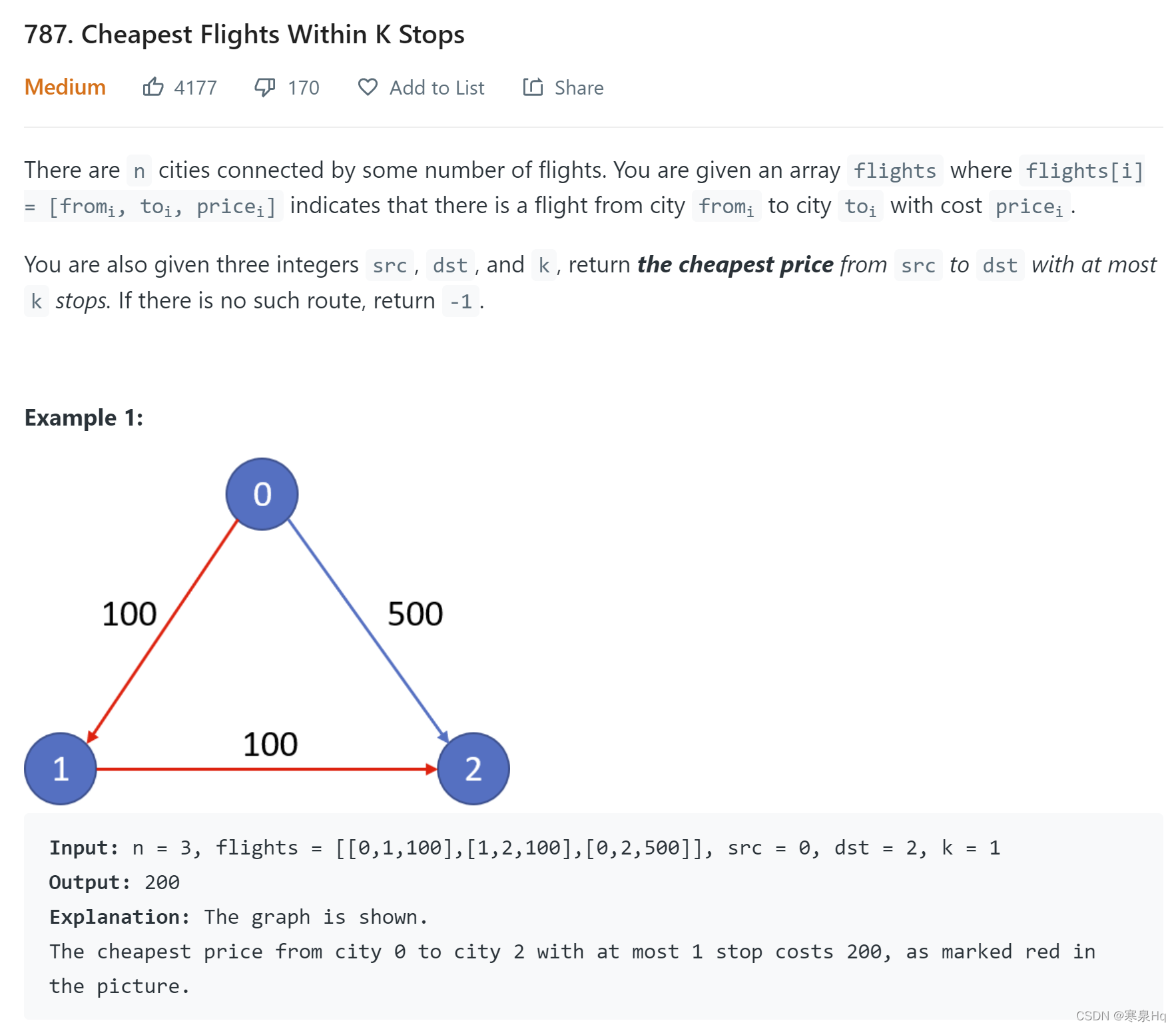题目
https://leetcode.com/problems/cheapest-flights-within-k-stops/

题解
这题挺坑的实际上。DFS 超时了,因为涉及到步数限制 k,所以并不能加缓存,然后去看了答案。
答案给了一种 BFS 解法,看完思路我就开始一顿写。
一开始是按照如果走回头路的开销比不走回头路更小的话,就走回头路这种思路来写的。提交的时候发现,能不能走回头路,这个问题会比较复杂。
回头路是可以走的,但是不能简单的用回头路的开销去覆盖原有的开销,因为在你走回头路的时候,3步到①可能比2步到①的实际开销更小,但你不能确定在之后剩余的步数中,哪种选择更好。
说白了就是,当你还不能确定要不要走重复路线的时候,一维的dist不能同时保存走或不走两种结果。
所以后来用了 int[2] 存储[i,从src到i的距离。详见注释吧。
最后,贴一下混乱的草稿。

class Solution {
public int findCheapestPrice(int n, int[][] flights, int src, int dst, int k) {
int[][] graph = new int[n][n];
for (int i = 0; i < n; i++) {
Arrays.fill(graph[i], -1);
}
for (int[] f : flights) {
graph[f[0]][f[1]] = f[2];
}
// BFS
int[] dist = new int[n]; // dist[i]表示src->i的距离
Arrays.fill(dist, Integer.MAX_VALUE);
dist[src] = 0;
// 此处使用int[]的原因是,不能简单的从dist中拿最小结果,因为在你走回头路的时候,3步到①可能比2步到①的实际开销更小,
// 但你不能确定在之后剩余的步数中,哪种选择更好。
// 说白了就是,当你还不能确定要不要走重复路线的时候,一维的dist不能同时保存走或不走两种结果。
Stack<int[]> stack = new Stack<>(); // [i,从src到i的距离]。
stack.push(new int[]{src, 0});
int step = 0;
while (step++ <= k) {
if (stack.isEmpty()) break;
Stack<int[]> newStack = new Stack<>();
while (!stack.isEmpty()) {
int[] pair = stack.pop(); // pair = [i,从src到i的距离]
int i = pair[0];
for (int j = 0; j < n; j++) { // src->i->j
// 如果之前已经走过,只有当距离比原来小的时候才加入计算
// 如果之前没走过,则当前距离肯定比INF小,所以肯定会加入计算
if (i != j && graph[i][j] >= 0 && pair[1] + graph[i][j] < dist[j]) {
dist[j] = pair[1] + graph[i][j];
newStack.add(new int[]{j, dist[j]});
}
}
}
stack = newStack;
}
return dist[dst] == Integer.MAX_VALUE ? -1 : dist[dst];
}
}
